Abstract
There appear to be several alleles of the hexosaminidase A (HEX A) gene that lead to different clinical syndromes. In addition to the infantile-onset Tay-Sachs disease (TSD), there is a juvenile-onset and an adult-onset form, which are also characterized by low HEX A levels. There are also apparently healthy adults with low HEX A activity. Based primarily on data from population screening for TSD carrier status, we estimate the allele frequency of the combined variant alleles for which data are available to be about 4.5 x 10(-4) and the frequency of adults showing zero HEX A levels (when tested using artificial substrate) to be about 1:67,000. The implications for population screening and prenatal diagnosis are discussed.
Full text
PDF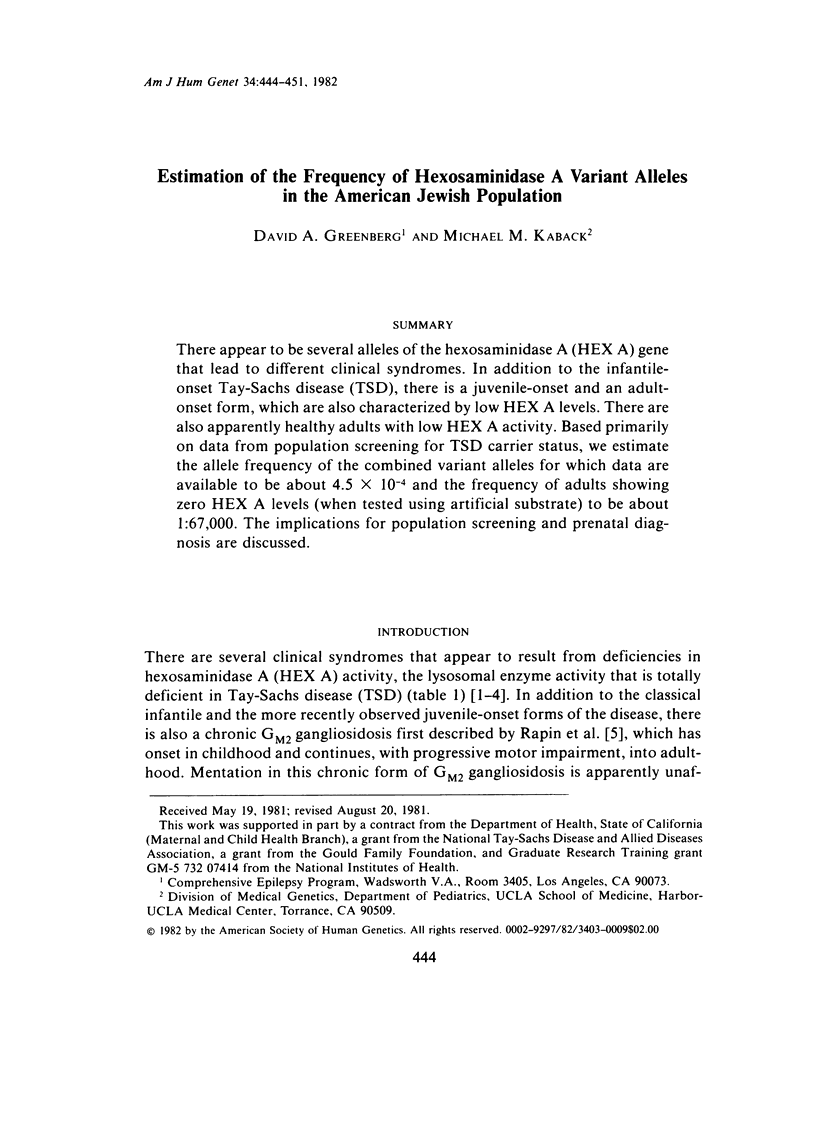

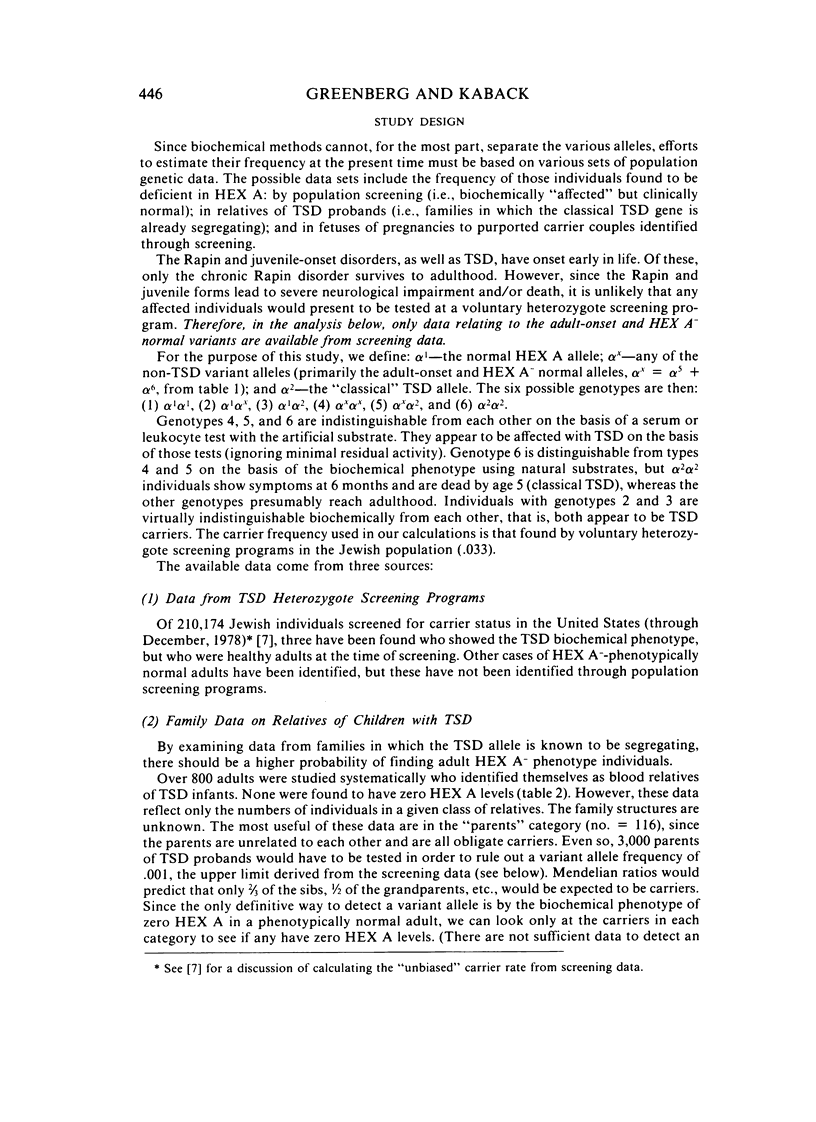
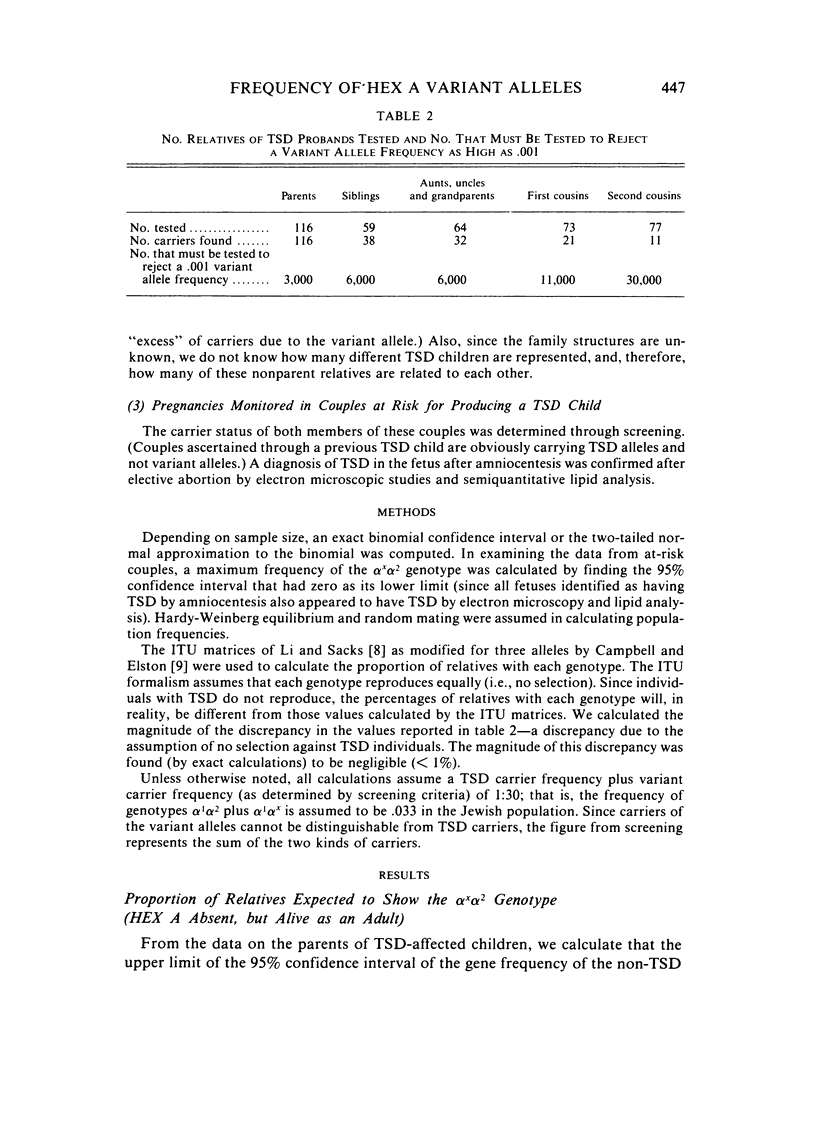
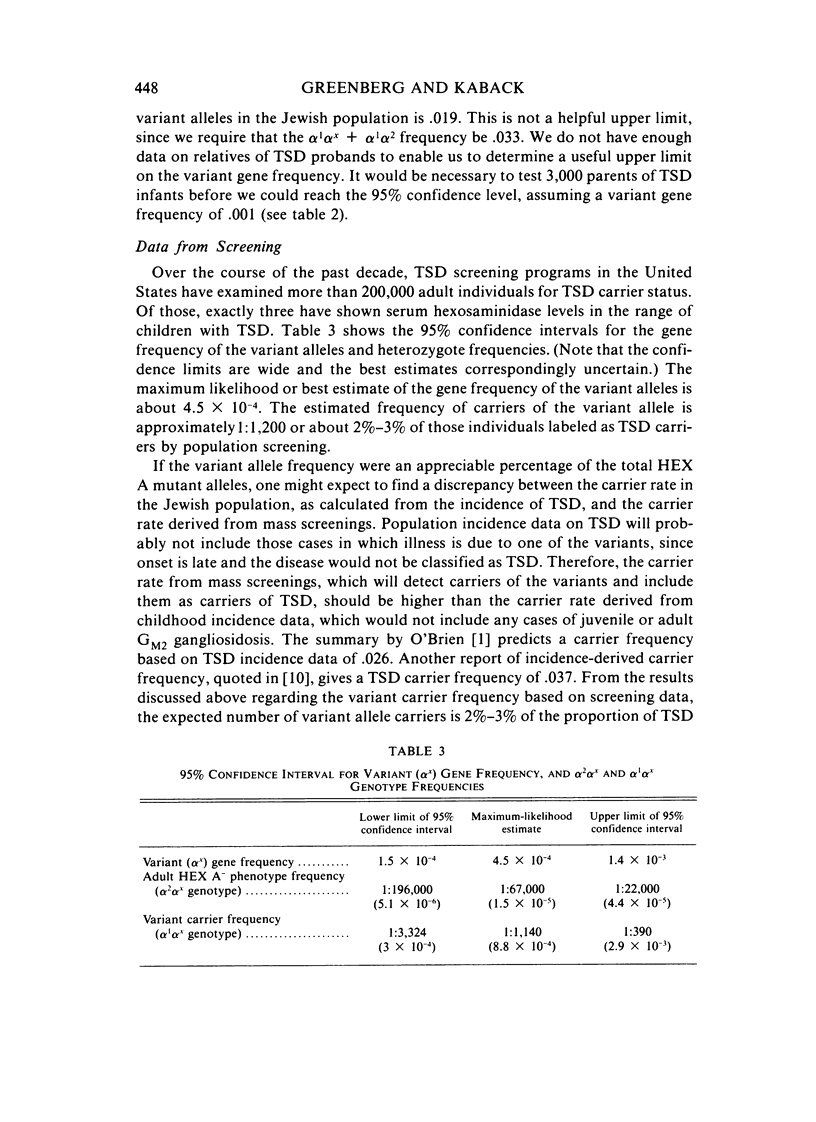
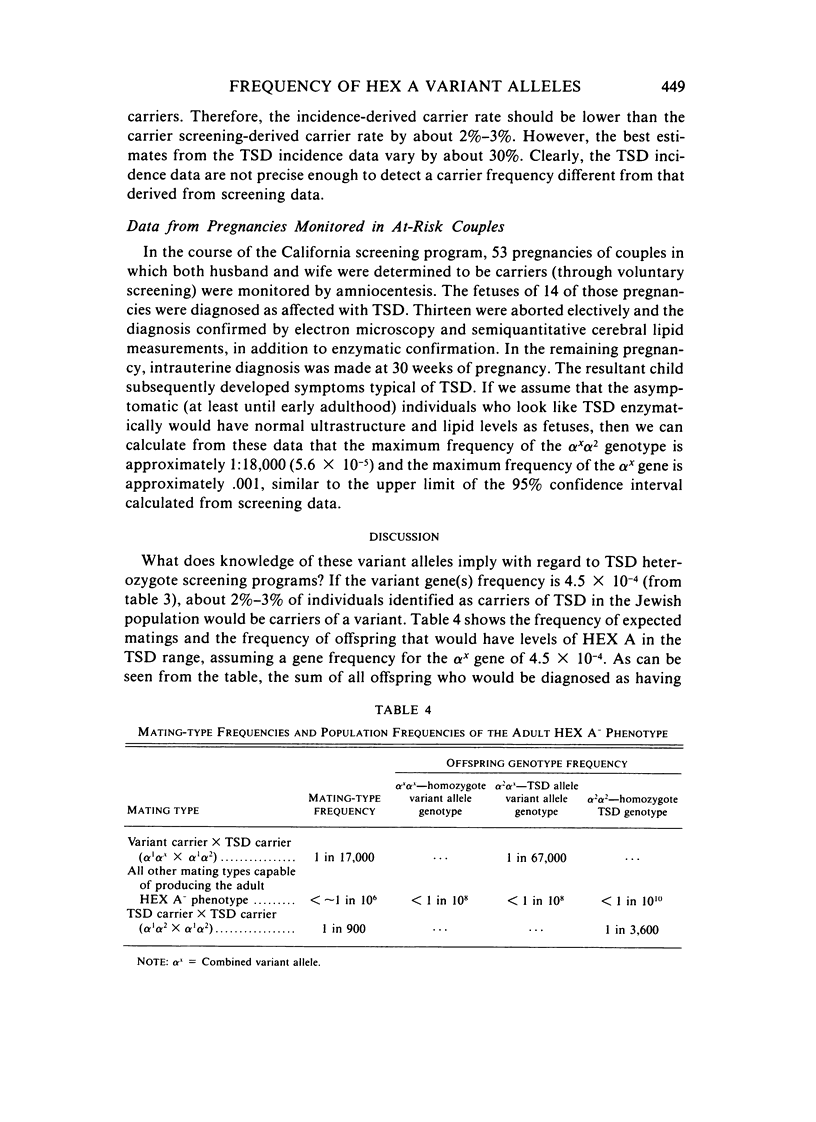

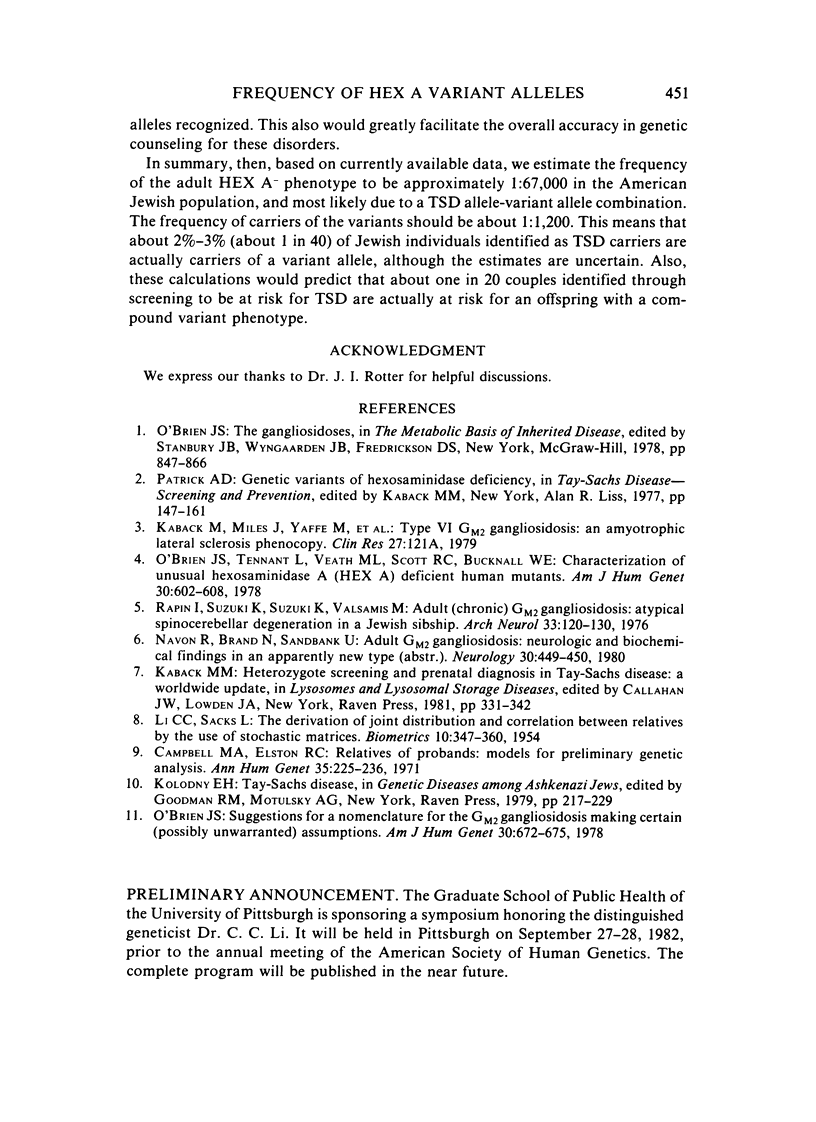
Selected References
These references are in PubMed. This may not be the complete list of references from this article.
- Campbell M. A., Elston R. C. Relatives of probands: models for preliminary genetic analysis. Ann Hum Genet. 1971 Oct;35(2):225–236. doi: 10.1111/j.1469-1809.1956.tb01395.x. [DOI] [PubMed] [Google Scholar]
- O'Brien J. S. Suggestions for a nomenclature for the GM2 gangliosidoses making certain (possibly unwarrantable) assumptions. Am J Hum Genet. 1978 Nov;30(6):672–675. [PubMed] [Google Scholar]
- O'Brien J. S., Tennant L., Veath M. L., Scott C. R., Bucknall W. E. Characterization of unusual hexosaminidase A (HEX A) deficient human mutants. Am J Hum Genet. 1978 Nov;30(6):602–608. [PMC free article] [PubMed] [Google Scholar]
- Rapin I., Suzuki K., Suzuki K., Valsamis M. P. Adult (chronic) GM2 gangliosidosis. Atypical spinocerebellar degeneration in a Jewish sibship. Arch Neurol. 1976 Feb;33(2):120–130. doi: 10.1001/archneur.1976.00500020048008. [DOI] [PubMed] [Google Scholar]


